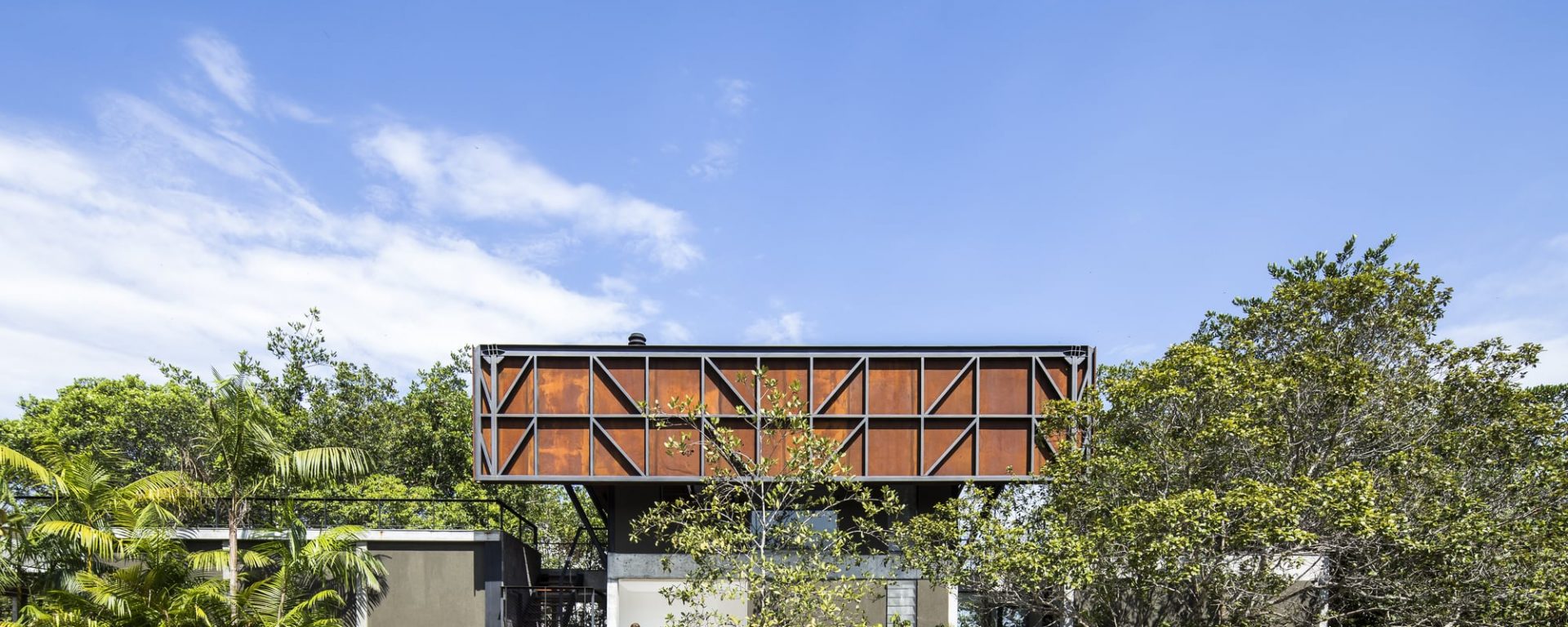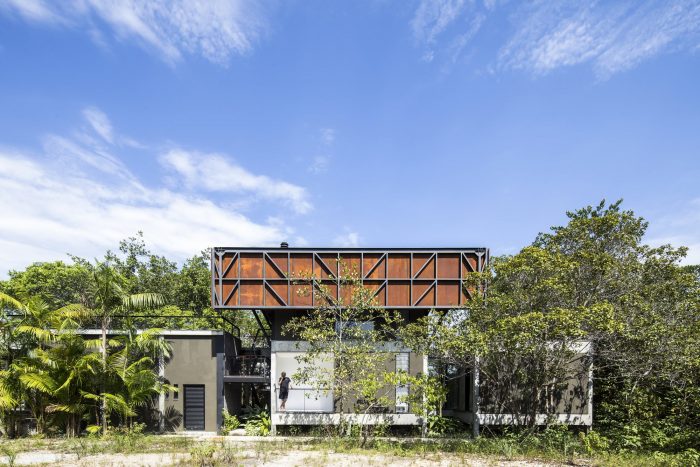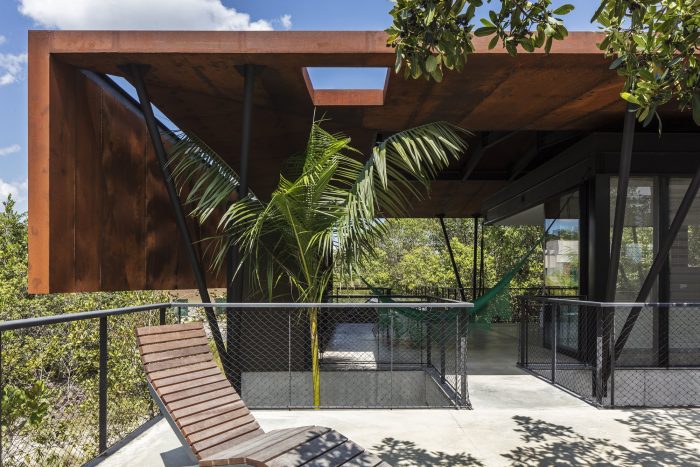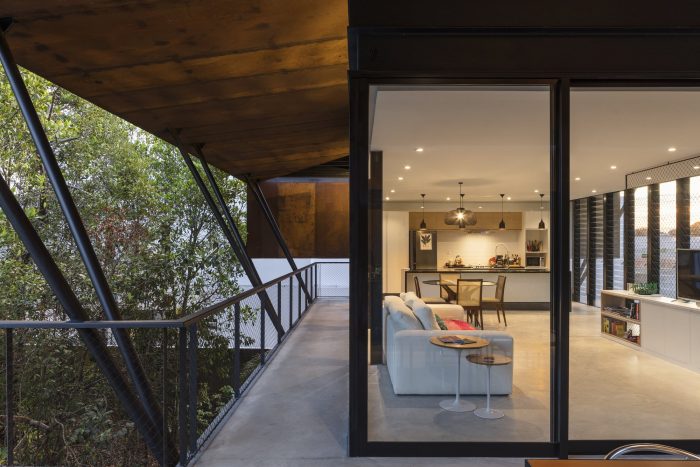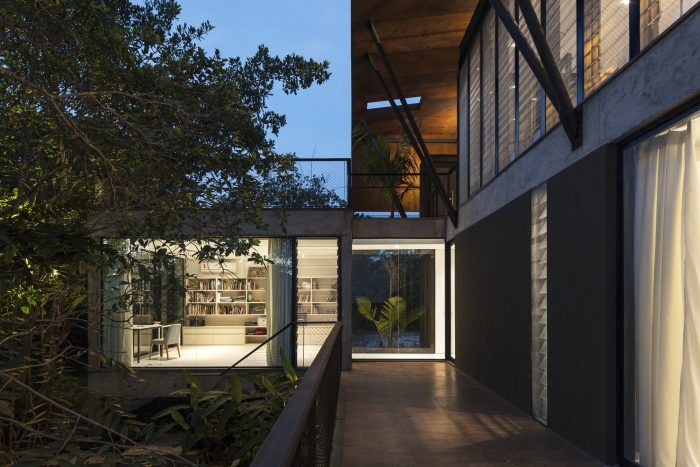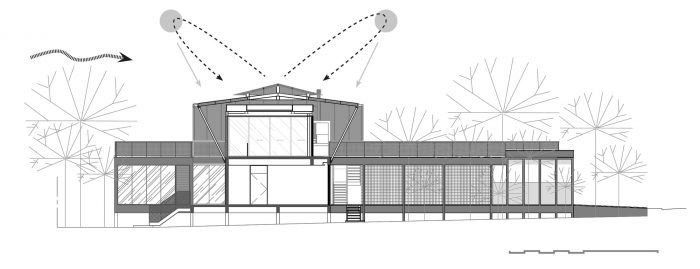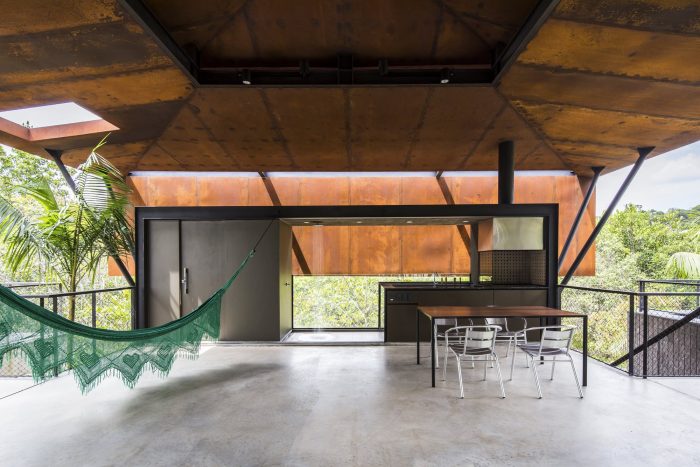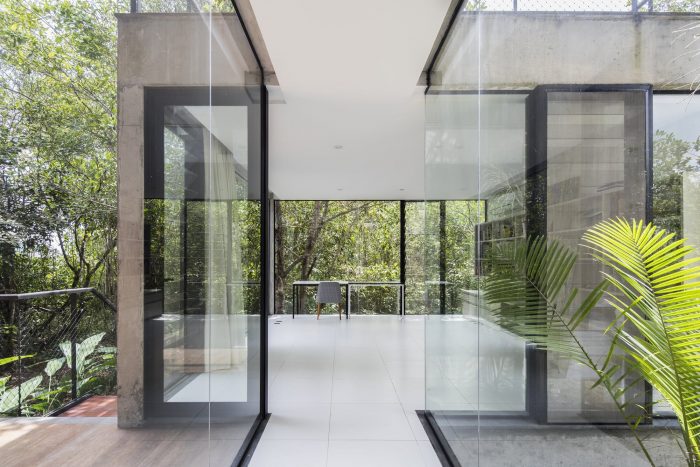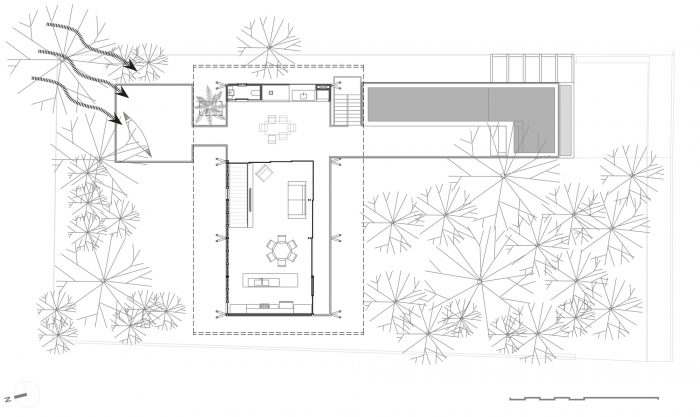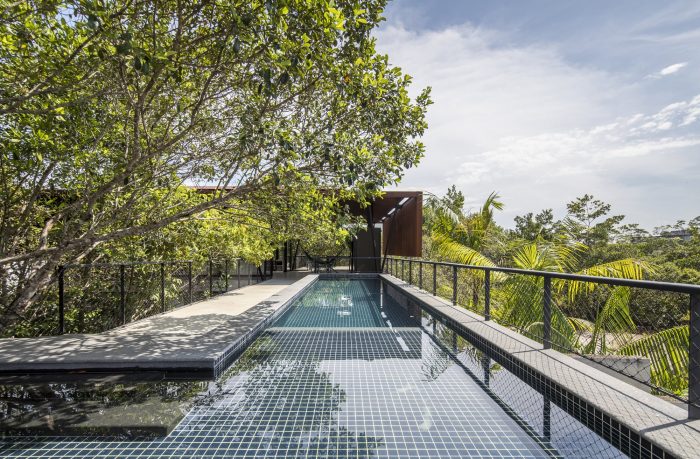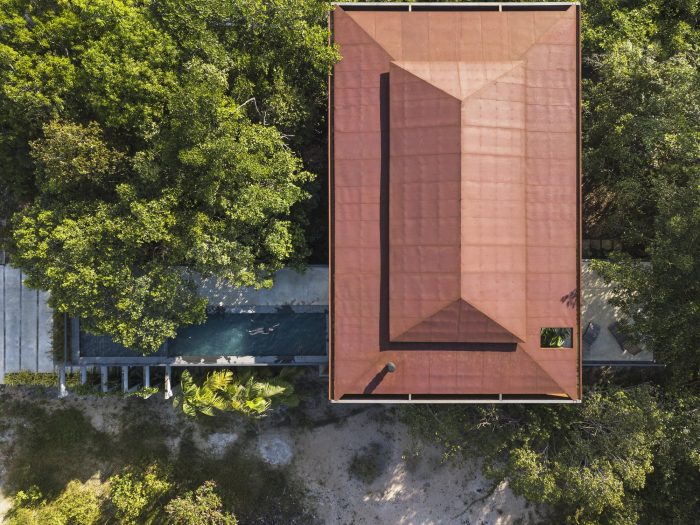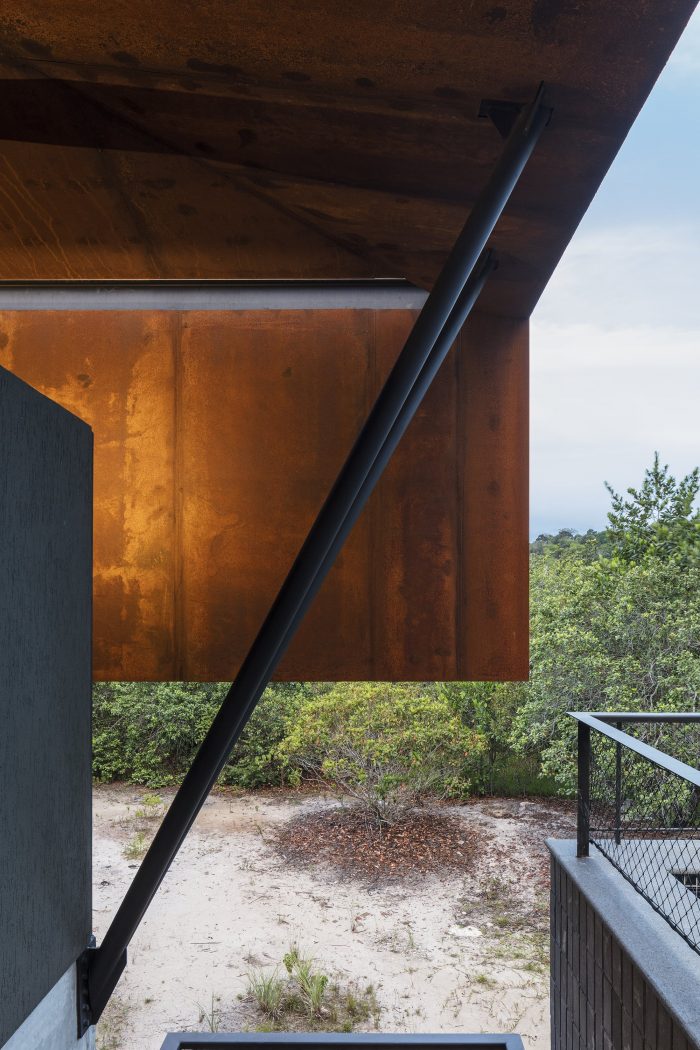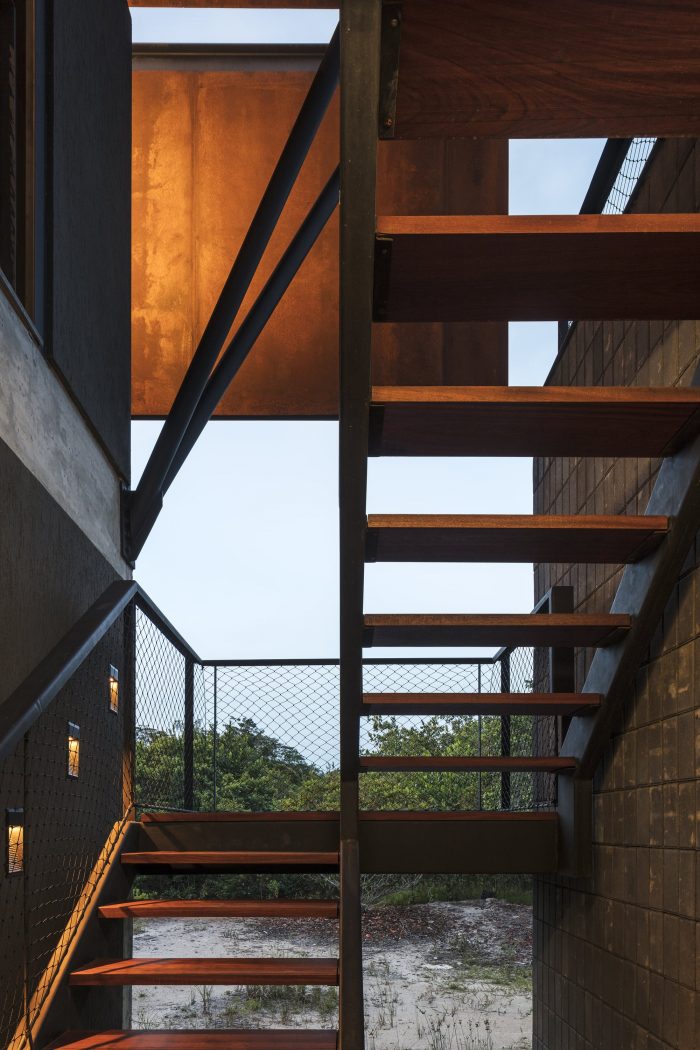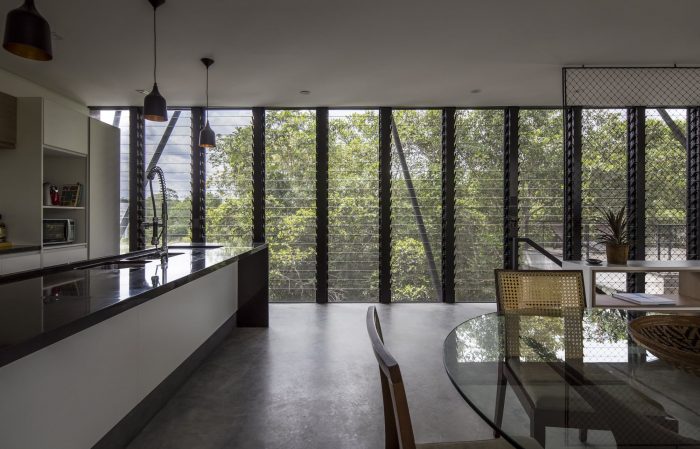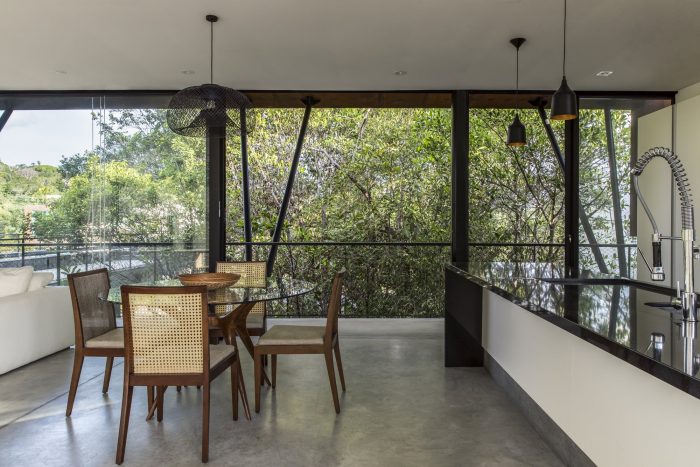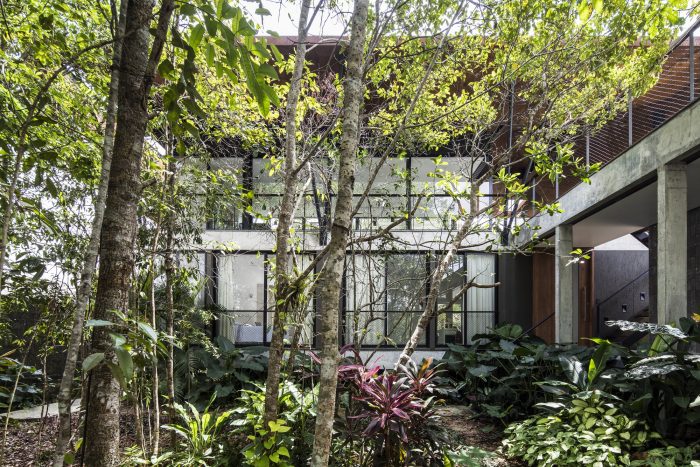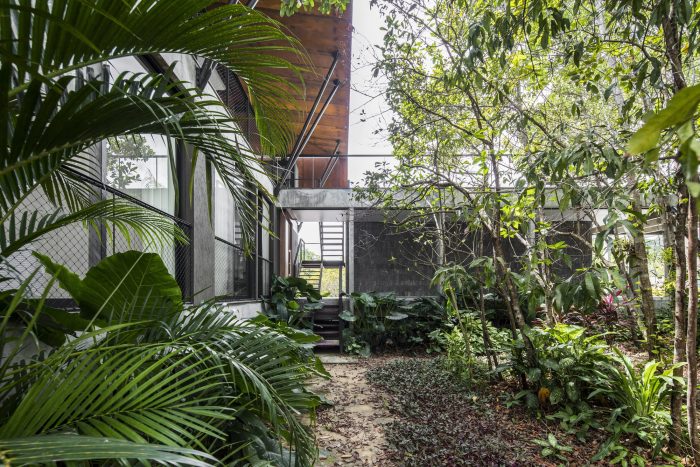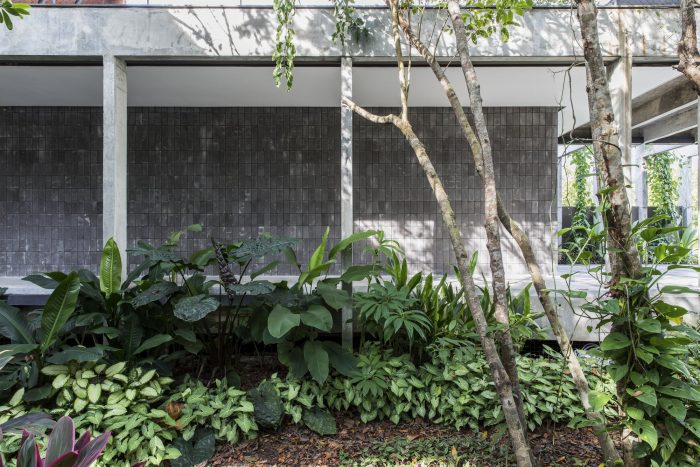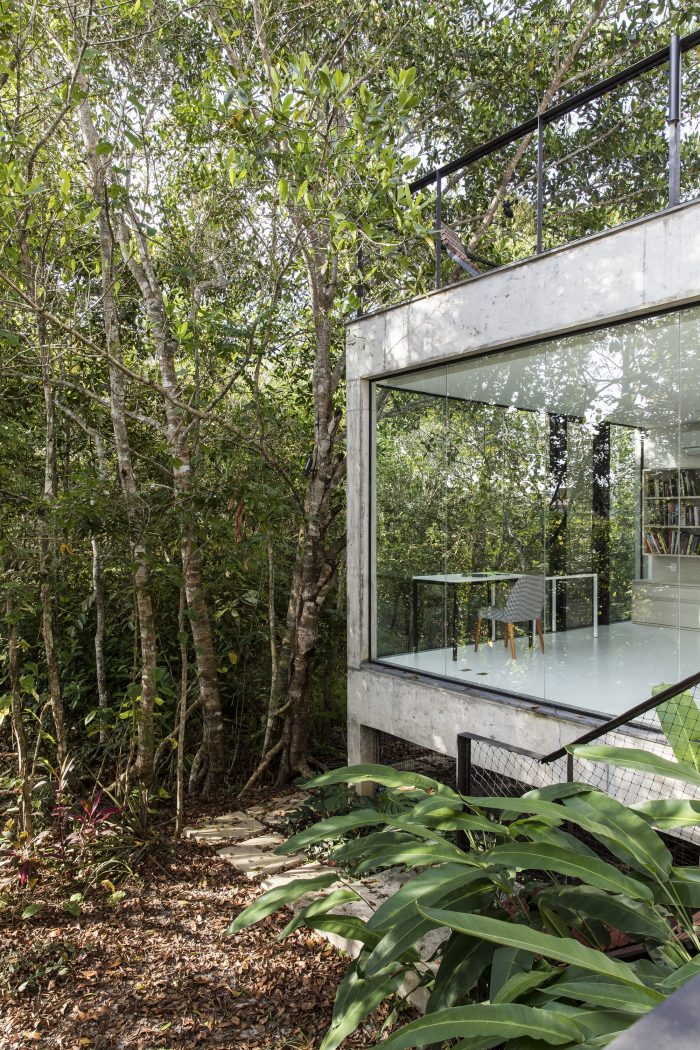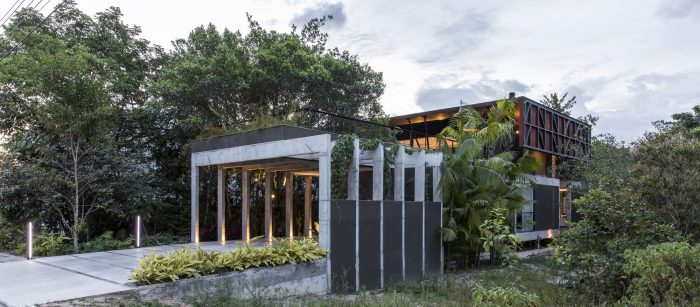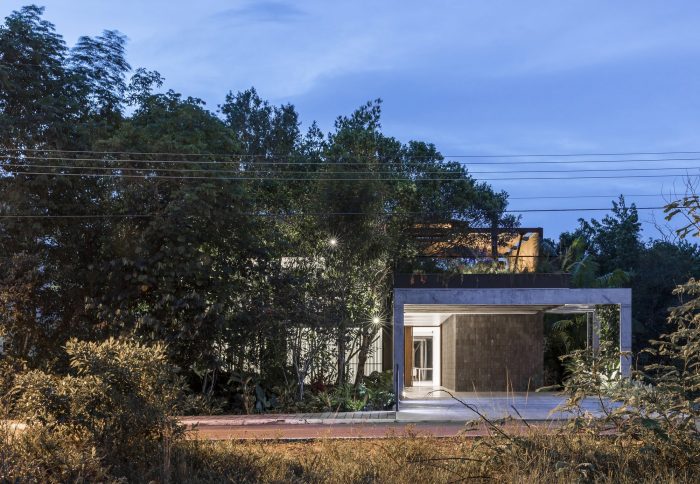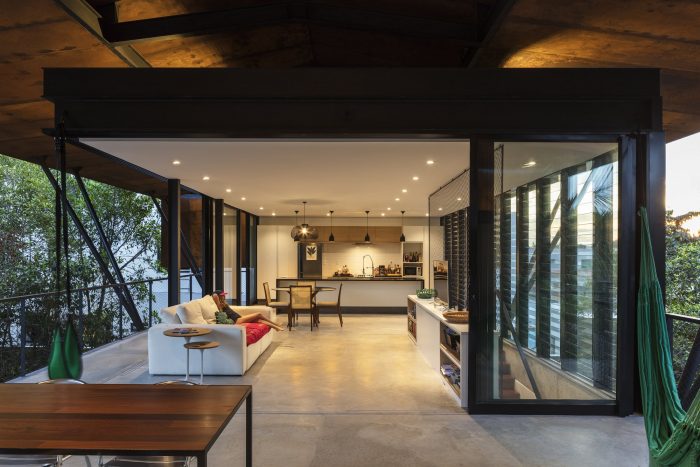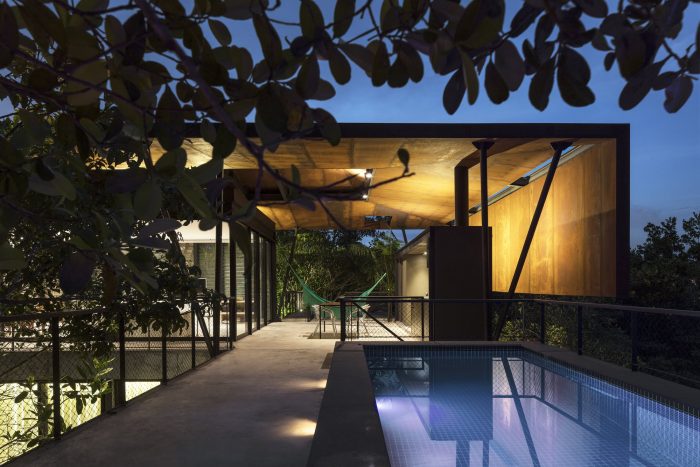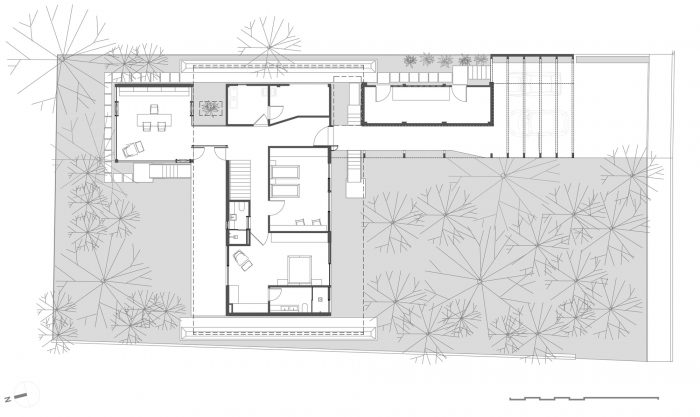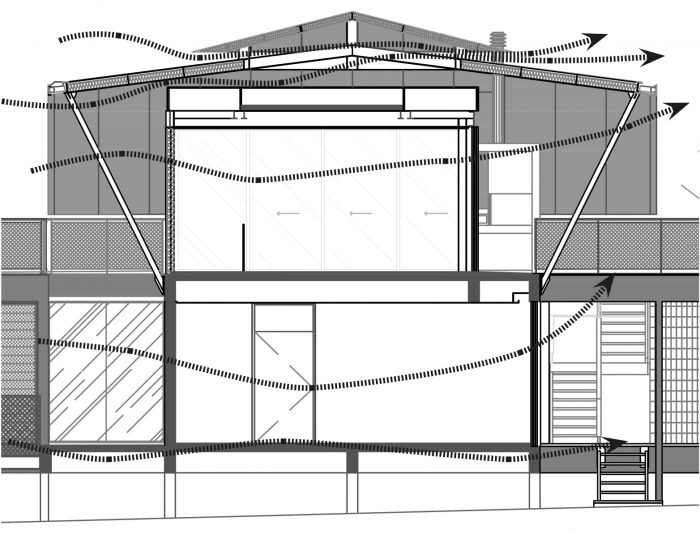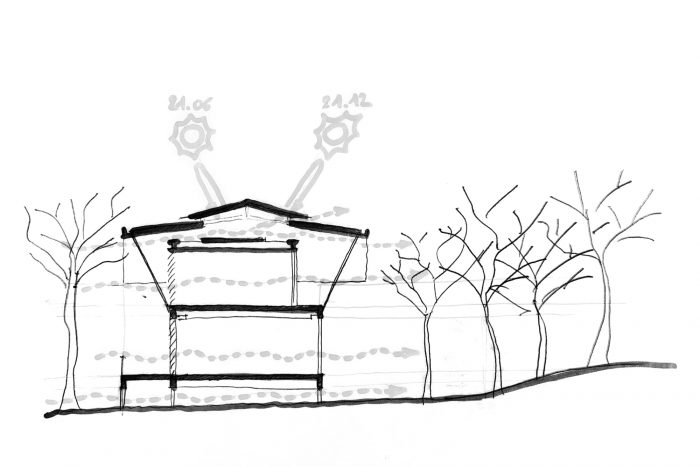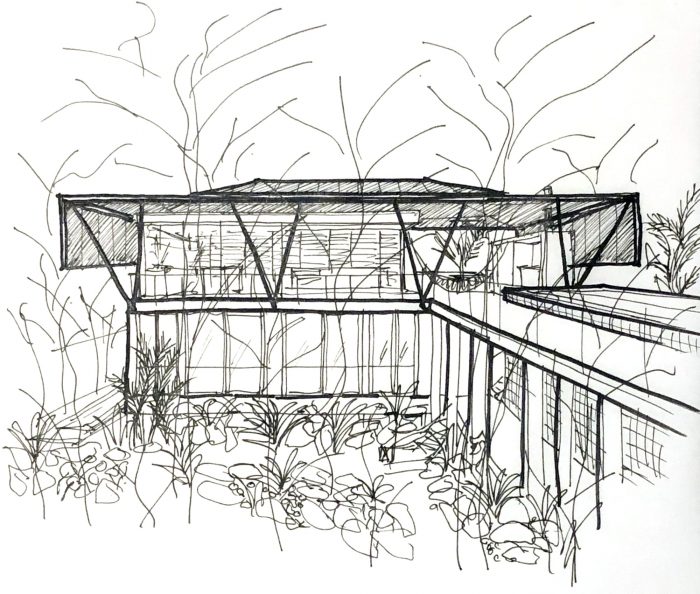亚马逊地区,比地球上任何其他地区都更需要适合气候的建筑策略。自然和环境条件是极端的,而且靠近赤道地区,这就要求建筑以热舒适和 “被动 “可持续性为导向,即充分的部署、创造保护性的屋檐、交叉通风的开口尺寸和方向,以及保护当地的生态系统。坎皮纳拉(Campinarana)–亚马逊森林类型的特点是小树,其土壤是浅层和粘土–的保护/价值化是该项目的概念的出发点。
The Amazon, more than any other area on the planet, requires climate-appropriate architectural strategies. The natural and environmental conditions are extreme and the proximity of the equatorial zone requires an architecture oriented towards thermal comfort and “passive” sustainability, that is, adequate deployment, creation of protective eaves, dimensioning and orientation of the openings for cross-ventilation, as well as the preservation of local ecological systems. The preservation/valorization of Campinarana – Amazon forest type characterized by small trees, whose soil is shallow and clayey – was the starting point for the concept of the project.
为了最大限度地减少森林砍伐并尽可能地保护森林,在20 x 40米的地块上的主要建筑策略是颠覆传统的住房类型。房间位于底层,内部生活环境、外部座位和游泳池位于上层平台。为了优化气候因素的影响,房子被分为两个部分。纵向的体量是允许阳光照射的功能(通道、车库、储藏室、游泳池、洗衣房),横向的体量是需要防晒的功能(客厅、饭厅、厨房和卧室)。
To minimize deforestation and preserve as much as possible of the Forest, the main architectural strategy for construction in the 20 x 40 m plot was the reversal of the classic housing typology. The rooms are located on the ground floor and the internal living environments, the outside seating, and the swimming pool are located on the upper deck. To optimize exposure to climatic factors, the house was divided into 2 volumes. The longilineous one houses functions allowing sun exposure (access, garage, storage, pool, laundry) and the transversal one functions in need of sun protection (living room, dining room, kitchen, and bedrooms).
主要的横向体量得到了殖民时期屋顶的现代重新诠释,在两个独立的层面上有8个坡度,允许风的结果,并在中间的空间创造一个气垫,保护房子上层生活空间的热舒适性。主体部分的宽度减少是为了保证所有环境下的交叉通风。这种适应气候的被动能源策略允许非常低的能源消耗。在东面和西面,屋顶由横向的垂直平面组成,保护居住空间免受赤道阳光的第一和最后一缕照射。
The main transversal volume received a contemporary reinterpretation of the colonial roofs, with 8 pitches in 2 independent levels, allowing the fruition of the winds and the creation of an air mattress in the in-between space, protecting the thermal comfort of the living space of the upper floor of the house. The reduced width of the main volume is designed to guarantee cross ventilation in all environments. This passive energy strategy adapted to the climate allows a very low energy consumption. On the East and Westside, the roof consists of lateral vertical planes that protect the inhabited spaces from the first and last rays of the equatorial sun.
此外,我们还关注创造一个独立的房屋屋顶,向北和向南建造两米的屋檐,仅由八个 “V “形的支撑物支撑。因此,在不影响房屋结构的情况下,屋顶可以根据全年的热变化和日照来扩大功能。选择Corten作为屋顶材料是由于它的低维护和进化特性,与Campina森林和亚马逊风景中的红色粘土相协调。除了两侧的推拉窗和第三侧的玻璃片保证了交叉通风外,全玻璃的起居室使其与有顶的露台、日光浴室、游泳池和大自然完全融合。
There was also the concern to create an independent roof of the house, with the construction of eaves of two meters to the North and to the South, supported only by eight supports in “V”. The roof, therefore, can dilate in the function of the thermal variation and insolation throughout the year, without compromising the structure of the house. The choice of Corten as roof material was due to its low maintenance and evolutionary character in harmony with the Forest of Campina and its reddish clay soil so present in the landscapes of the Amazon. In addition to the guaranteed cross ventilation with its sliding windows on both sides and the glass fins on the third side, the fully glazed living room allows complete integration with the covered terrace, solarium, pool, and nature.
Architects: Laurent Troost Architectures
Area : 366 m²
Year : 2017
Photographs :Leonardo Finotti, Maíra Acayaba
Manufacturers : mmcite, Amazon Aço, Dellanno, Gerdau Corsa, ROCHA Aluminium
Team : Laurent Troost, Raquel Brasil dos Reis
Structural Project : Eng. Flávio Carvalho
Complementary Projects : Eng. Raimundo Onety
Landscaping : Laurent Troost, Hana Eto Gall, Edith Eto Gall
Mobiliário : MMCité, Dellanno
Construction : Helena Rabello, Daniel Herzson
Award 1 : World Architecture Award 30th Cycle – Winner
Award 2 : 2019 Metal Architecture Design Award – Winner
Award 3 : 2019 A’Design Award – Silver
Award 4 : 2019 Metal Architecture Design Award – Winner
Featured 1 : 2018 Oscar Niemeyer Award – Nominated
Featured 2 : Selected – “L’Amazonie en construction: l’architecture des fleuves volants”, Paris, 2019
Featured 3 : 2019 THE PLAN Award – Finalist
Featured 4 : Selected – “XAMA: 30 years in the Amazon in 30 works”, Amazon capitals, 2018-2019
Featured 5 : Selected – “Works panorama” XI BIAU (Bienal Ibero-americana de Arquitectura y Urbanismo), 2019
Featured 6 : 2019 Dezeen Awards – Longlisted (still running)
Project Author : Laurent Troost
City : Manaus
Country : Brazil

